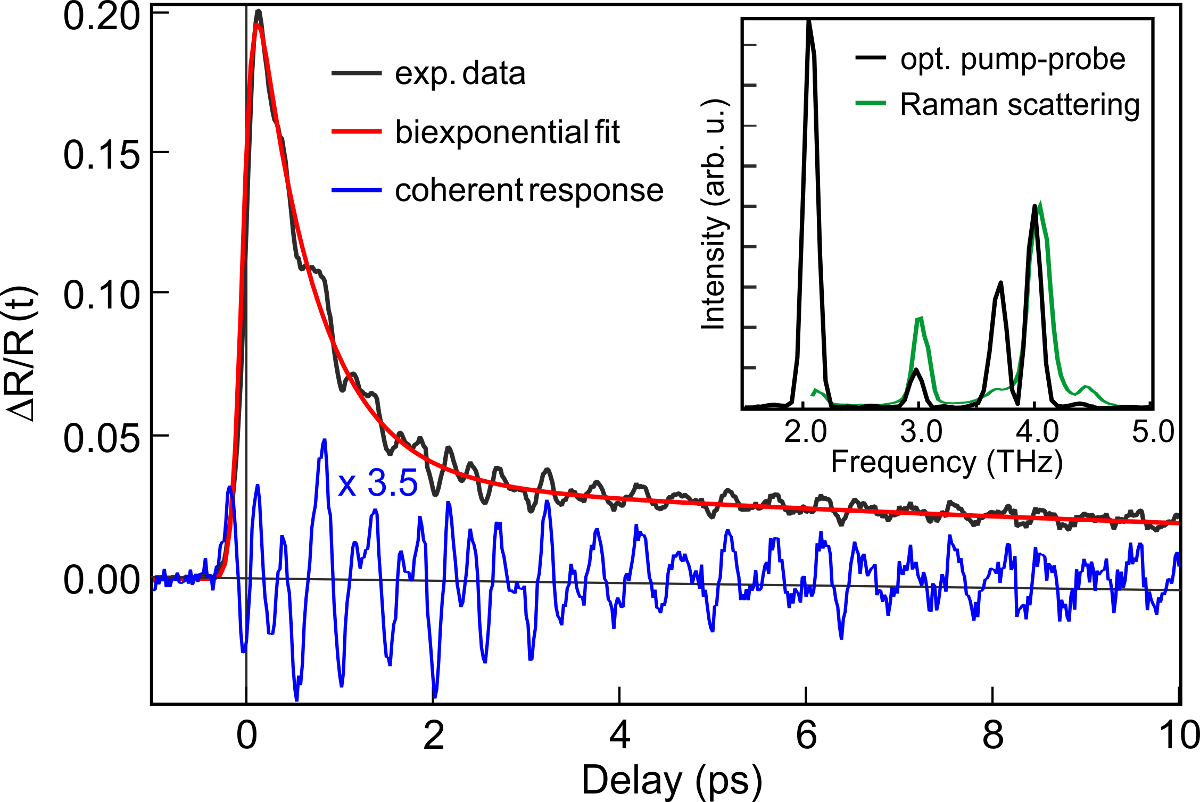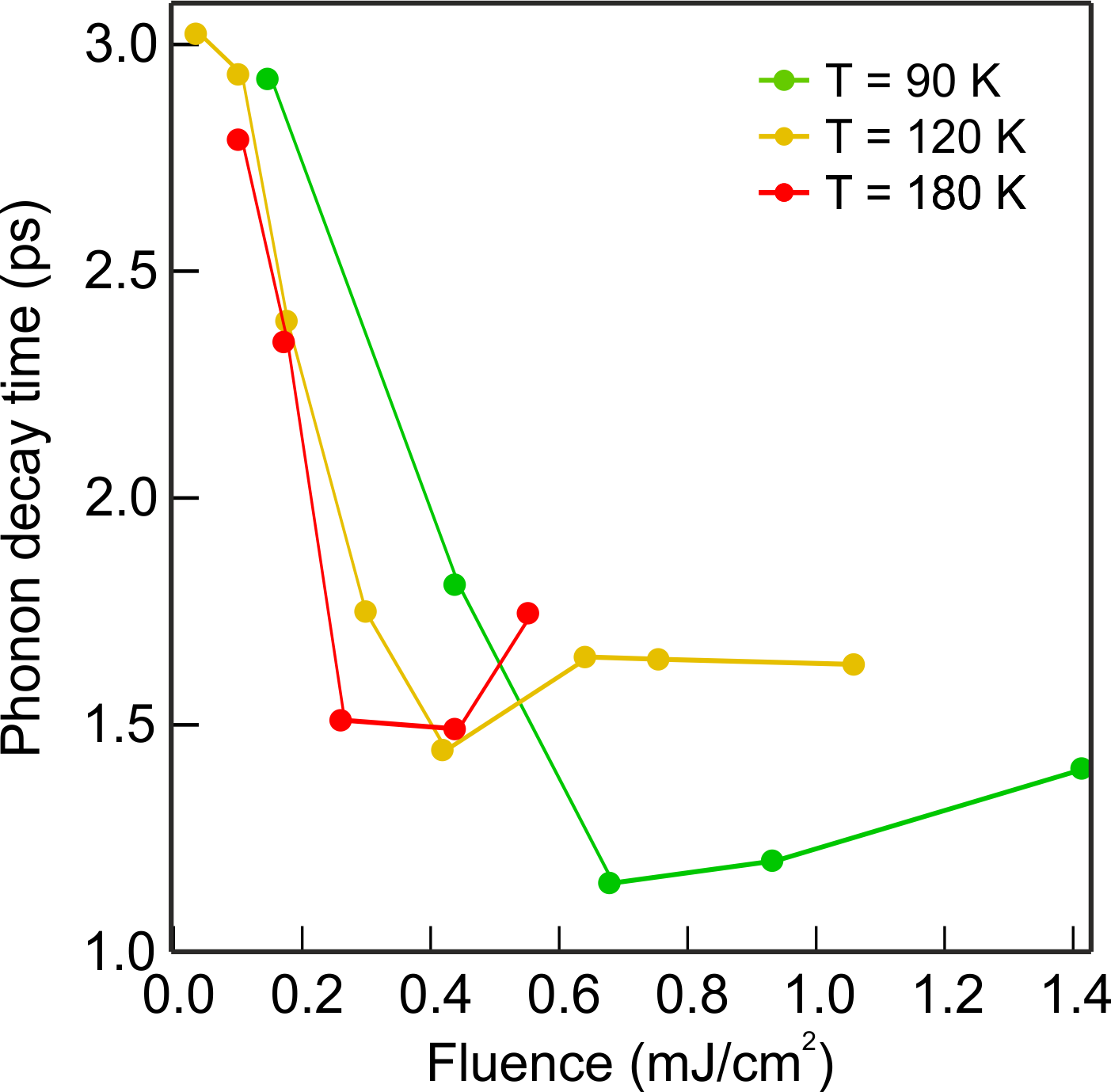




| 09:00-10:40 | We1: E-ph coupling in novel 2D materials (I) |
| 10:40-11:20 | Coffee break |
| 11:20-13:00 | We2: E-ph coupling in novel 2D materials (II) |
| 13:00-15:30 | Poster session B |
| Afternoon off - some suggested activities can be found here | |
| 19:30-20:30 | Public lecture by Polanyi in Kutxa Sala Andia (city center) |
Chair: P. Saalfrank, Potsdam, Germany
Contributed talk
Coherent phonon dynamics across the phase transition of quasi-1D Ta2NiSe5
1Fritz-Haber-Institut der Max-Planck-Gesellschaft, Berlin, Germany
2University of Zurich, Zurich, Switzerland
The ternary chalcogenide Ta2NiSe5 (TNS) is a layered compound loosely stacked by van-der-Waals interaction [1]. Within each layer Ni single chains and Ta double chains form a quasi-1D structure giving rise to strongly anisotropic behaviour as seen e.g. in electrical conductivity [1]. TNS undergoes a metal-semiconductor transition below 550 K and an additional electronic phase transition from a semiconductor to an excitonic insulator (EI) at TC = 328 K which stabilizes the band gap to EG ≈ 300 meV [2]. The latter transition is accompanied by a structural distortion from orthorhombic to monoclinic symmetry [1,2].
In order to reveal the microscopic mechanism of the complex phase transitions in TNS we employ optical pump-probe spectroscopy. After laser-pulse excitation into a non-equilibrium state using hνpump = 1.55 eV, the infrared reflectivity at hνprobe ≈ EG is monitored on a femtosecond to few-picosecond timescale. Fig. 1 shows a typical transient reflectivity change after excitation of the monoclinic/EI phase (T = 120 K). The signal shows an incoherent response due to hot-carrier creation and relaxation which is superimposed by damped oscillations due to coherent phonons. A Fourier analysis reveals four phonon modes (inset in Fig. 1), the 4 THz mode being present only below TC. These findings are confirmed by temperature-dependent Raman spectroscopy. An excitation density-dependence at different temperatures reveals a saturation of both the coherent and incoherent response at a fluence Fsat(T) suggesting a saturated pump pulse absorption. As TC is approached Fsat(T) decreases which is interpreted as an increasingly fulfilled resonance condition for the pump pulses. In contrast to the other modes the lifetime of the 4 THz phonon drops from 3 to 1 ps (Fig. 2) also saturating at Fsat(T). In conclusion, the first coherent and incoherent phonon spectroscopy experiments on TNS identify a 4 THz phonon mode characteristic of the monoclinic phase which is strongly coupled to the photocarrier density. This work has been done in collaboration with T. Mizokawa, N. Katayama, M. Nohara, and H. Takagi.

Fig. 1: Relative reflectivity change of TNS at 120 K after 1.55 eV excitation with 0.3 mJ/cm2 probed by 0.3 eV laser pulses. Inset: FFT spectrum of the coherent component in comparison with Raman spectrum (hνprobe = 532 nm).

Fig. 2: Dependence of 4 THz phonon lifetime on excitation fluence at different temperatures.
[1] Di Salvo et al., J. Less-Common Met. 116, 51 (1986)
[2] Wakisaka et al., Phys. Rev. Lett. 103, 026402 (2009); Seki et al., Phys. Rev B 90, 155116 (2014)